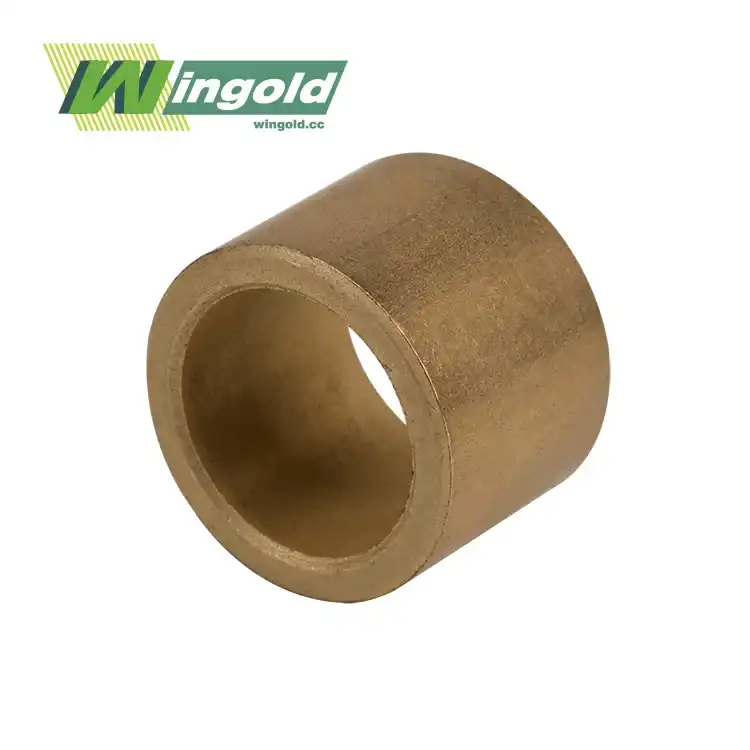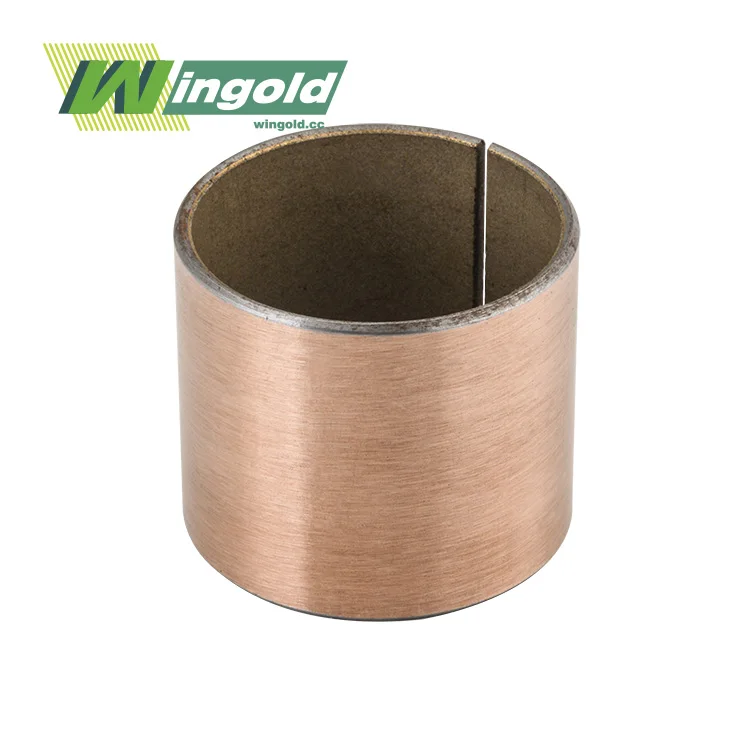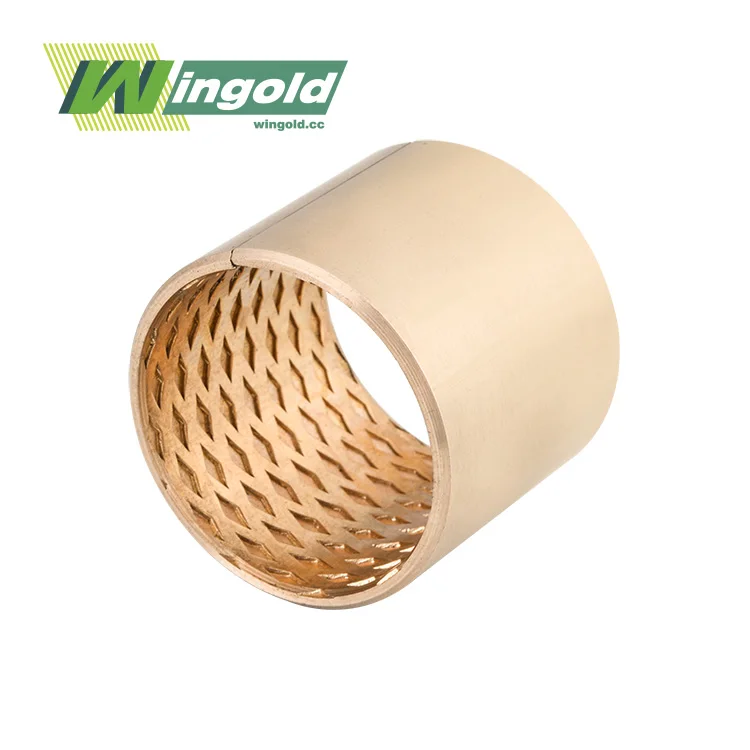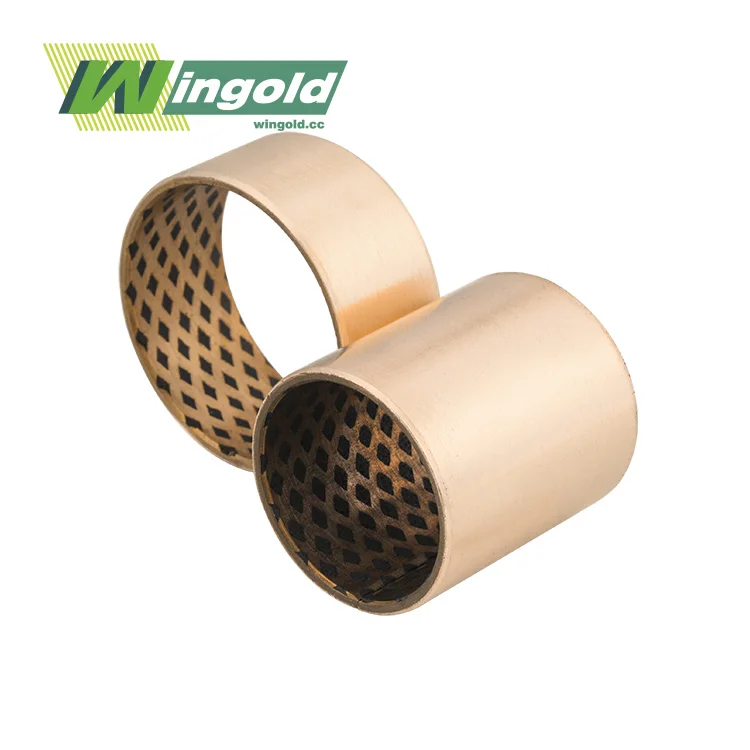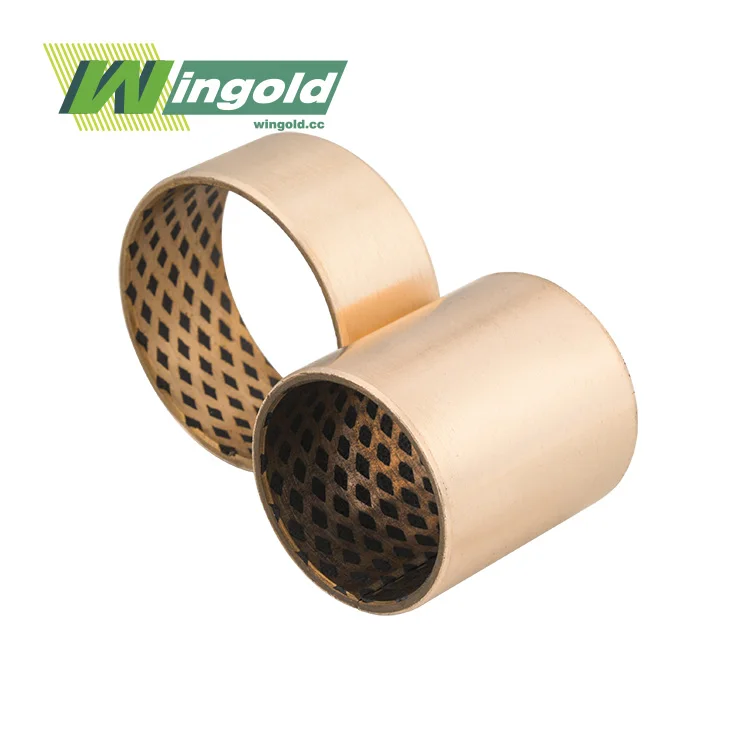The Unique Properties of Sintered Brass Bushings
Self-Lubricating Characteristics
One of the most remarkable features of sintered brass bushings is their self-lubricating property. This characteristic stems from the porous structure created during the sintering process. The tiny interconnected pores within the material act as reservoirs, holding lubricant for extended periods. As the machinery operates, the lubricant is gradually released, ensuring a constant supply of lubrication between the bushing and the mating surface.
This self-lubricating nature offers numerous advantages. It significantly reduces the need for frequent maintenance and re-lubrication, leading to lower operational costs and increased uptime for industrial machinery. Moreover, the consistent lubrication minimizes wear and tear on both the bushing and the shaft, extending the overall lifespan of the components and the machinery as a whole.
Superior Wear Resistance
Sintered brass bushings exhibit exceptional wear resistance, a critical factor in industrial applications where components are subjected to constant motion and stress. The unique composition and manufacturing process of these bushings result in a material that can withstand prolonged use without significant degradation.
The wear-resistant properties of sintered brass bushings are particularly beneficial in high-load or high-speed applications. They maintain their dimensional stability and performance characteristics even under challenging conditions, ensuring consistent operation and reducing the frequency of replacements. This durability translates to improved reliability of industrial machinery and reduced downtime for maintenance or repairs.
Excellent Load-Bearing Capacity
Another key attribute of sintered brass bushings is their impressive load-bearing capacity. Despite their porous structure, these bushings can support substantial loads without deformation or failure. This capability is due to the careful selection of materials and the precise control of the sintering process, which results in a robust and resilient component.
The high load-bearing capacity of sintered brass bushings makes them ideal for use in heavy-duty industrial machinery. They can withstand the stresses and strains associated with high-load applications while maintaining their structural integrity and functionality. This resilience contributes to the overall performance and longevity of the machinery, reducing the likelihood of component failure and associated downtime.
Applications of Sintered Brass Bushings in Industrial Machinery
Automotive Industry
In the automotive sector, sintered brass bushings find extensive use in various components and systems. They are commonly employed in steering mechanisms, where their self-lubricating properties ensure smooth and precise movement. Suspension systems also benefit from these bushings, as they provide a stable and low-friction interface between moving parts, contributing to improved ride quality and handling.
Sintered brass bushings are also utilized in seat adjustment mechanisms, door hinges, and pedal assemblies. Their wear-resistant nature makes them ideal for these high-use applications, ensuring long-lasting performance and reducing the need for frequent replacements. The ability of these bushings to operate effectively in a wide temperature range further enhances their suitability for automotive applications.
Manufacturing Equipment
The manufacturing industry relies heavily on sintered brass bushings to enhance the performance and longevity of various equipment. In conveyor systems, these bushings are used in rollers and bearings, providing smooth operation and reducing maintenance requirements. Packaging machinery benefits from the low-friction characteristics of sintered brass bushings, enabling precise and efficient movement of components.
Printing presses, another critical area in manufacturing, utilize sintered brass bushings in their complex mechanisms. The bushings' ability to maintain dimensional stability under load ensures accurate printing results, while their self-lubricating nature contributes to reduced downtime for maintenance. In injection molding machines, these bushings play a crucial role in guide pins and ejector systems, withstanding high temperatures and pressures while maintaining consistent performance.
Heavy Machinery and Construction Equipment
The demanding environment of heavy machinery and construction equipment necessitates components that can withstand extreme conditions. Sintered brass bushings excel in this arena, offering reliable performance in excavators, cranes, and other heavy-duty machines. They are commonly used in pivot points, hydraulic cylinder mounts, and boom arm assemblies, where their load-bearing capacity and wear resistance are put to the test.
In construction equipment like bulldozers and loaders, sintered brass bushings are employed in track systems and bucket linkages. Their ability to operate effectively in dusty and abrasive environments makes them invaluable in these applications. The self-lubricating property of these bushings is particularly beneficial in construction equipment, as it reduces the need for frequent lubrication in often challenging and remote work sites.
The Manufacturing Process and Quality Control of Sintered Brass Bushings
Powder Metallurgy Techniques
The production of sintered brass bushings relies on advanced powder metallurgy techniques. This process begins with the careful selection and blending of metal powders, typically copper and zinc, in precise proportions. The powder mixture is then compacted into the desired shape using high-pressure compaction methods. This step is crucial in determining the final density and porosity of the bushing.
Following compaction, the green compacts undergo sintering in a controlled atmosphere furnace. During this process, the metal particles fuse together at temperatures below the melting point, creating a solid yet porous structure. The sintering parameters, including temperature, time, and atmosphere, are carefully controlled to achieve the desired mechanical and physical properties of the final product.
Precision Engineering and Dimensional Control
Achieving tight dimensional tolerances is paramount in the production of sintered brass bushings. Advanced CNC machining and precision grinding techniques are employed to ensure that the bushings meet exact specifications. This level of precision is essential for proper fit and function in industrial machinery applications.
Quality control measures are implemented at every stage of the manufacturing process. Sophisticated measuring equipment, such as coordinate measuring machines (CMMs) and optical comparators, are used to verify dimensional accuracy. This attention to detail ensures that each sintered brass bushing meets the exacting standards required for optimal performance in industrial settings.
Material Composition and Performance Testing
The composition of sintered brass bushings is carefully controlled to accomplish the wanted adjust of properties. Producers may alter the copper-to-zinc proportion or consolidate extra components to improve particular characteristics such as wear resistance or quality. Thorough testing is conducted to confirm that the fabric composition meets the required determinations.
Execution testing is an necessarily portion of the quality confirmation prepare for sintered brass bushings. This incorporates wear testing to assess solidness, stack testing to evaluate bearing capacity, and tribological testing to degree grinding and oil characteristics. Natural testing may too be conducted to guarantee that the bushings can withstand the aiming working conditions, counting temperature extremes and introduction to different chemicals or greases.
Conclusion
Sintered brass bushings are indispensable components that significantly enhance the performance, reliability, and longevity of industrial machinery. Their unique properties, including self-lubrication, wear resistance, and high load-bearing capacity, make them ideal for a wide range of applications across various industries. As manufacturing techniques continue to advance, we can expect further improvements in the performance and capabilities of these crucial components. For more information about our high-quality sintered brass bushings and how they can benefit your industrial applications, please contact us at info@wingold.cc.
